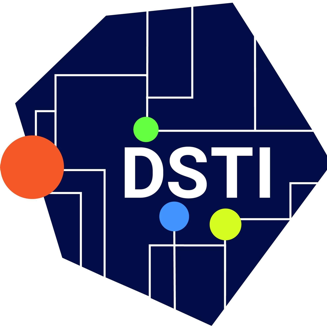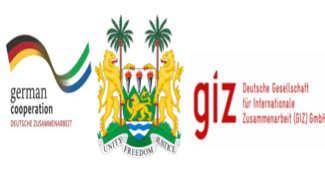

Date: 16th August 2022
THE DIRECTORATE OF SCIENCE, TECHNOLOGY AND INNOVATION has received support from the UNICEF SL for the facilitation of the Governance Innovation Bootcamp and now invites sealed Technical and Financial Proposals from eligible bidders for the consultancy services of DEVELOPMENT OF LAND RECORD REGISTRY TOOL FOR THE OFFICE OF THE ADMINISTRATOR AND REGISTRAR-GENERAL with procurement reference number DSTI/MITGOVLAB/OARG/2022/001
- In the second quarter of 2021, The Directorate of Science Technology and Innovation (DSTI) and MIT Governance Lab (MIT GOV/LAB) announced the commencement of the Governance Innovation Bootcamp 2021. The aim of this two-week intensive Bootcamp was to engage civil servants who sought to apply an innovative approach to their work and spark a culture of innovation within their teams for increased output of their service delivery. The teams were taught the MIT Gov/Lab Methodology and were guided through four phases of innovation: identifying a problem area, generating validated user-centred insights into the root causes, designing, and refining new concepts and, finally, turning these concepts into implementable solutions.
- The team from OARG proposed a solution to digitize land registry records, which are currently paper-based. An initial Research Phase (Phase 1) was pivotal as it identified and defined the scope, method, and while also proposing easy-to-attain solutions within a short period i.e., 1 (one) year.
- As a result of manual and outdated record management systems, records are in poor condition due to heat and humidity, and many have been misfiled, resulting in a large number of land disputes. A complete digital record would allow the office to better protect people’s property rights, allow citizens easy access to their land registry records, and reduce the time needed for transactions. Other constraints range from falsification of signatures, lack of physical storage and inconsistent electronic records, power outages and misalignment with other MDAs (for administrative functions) have a negative impact on their productivity. The current maximum capacity for OARG is registration of circa 200 instruments per day; however, this number has been halved in recent years.
This Request for Proposals (RFP) is open to all firms that are qualified and have the relevant experience in software development to fulfil the requirements of the proposed system. A firm will be selected under a Quality Cost Based selection method and procedures described in the RFP.
Copies of the detailed RFP can be obtained by contacting The Directorate of Science, Technology and Innovation Office at +23276456369 or email at proposals@dsti.gov.sl.
- OBJECTIVE
- The overall objective of the Land Records Registry tool is to provide OARG with a digitised database (repository) for all land records information and not be overwhelmed by manual data entry using spreadsheets or just folders with documents for some time as it now holds over 20,000 records in its archives.
- The aim is to increase the speed to access to accurate, reliable, and action-ready land records for citizens, the private sector, NGOs, and GoSL so that the role (s) and performance of each player can be tracked and recognized by the Government to inform policy and decision making. This objective has been broken down into:
- To reduce the time in registering and retrieving accurate and authentic land records and all incidental agreements concerning realty for Sierra Leonean entrepreneurs, investors, government, and private sector.
- To increase trust in the land registry and contribute to a significant reduction of disputes in the land and property division of the courts of Sierra Leone.
- To track the root of the title of land documents, to facilitate history tracking of all transactions involving an instrument, increase the collection and analyses of data, and the tracking of data of land records periodically showing the change in patterns and being able to predict future land records system must capture in addition to current data being captured in spreadsheets referenced data provided by lawyers during the drafting of instruments in the recital of pages and volumes.
- SCOPE OF WORK
The proposed plan for the Prototyping and Development of the Minimum Viable Product is briefly outlined here.
Phase 1 – Develop Prototype: Produce a working visualization of OARG’s record management portal. Usability flaws in the design are meant to be identified. The intention is to rapidly test the basic ideas and assumptions of the following features outlined as vital for OARG’s record management portal:
- Record Management Repository
- User management
- Authentication
- Searchability of key information in alignment with legal requirements
- Uploading PDF or scanned copies to the portal
Phase 2 – Develop Minimum Viable Product: The Prototype to be developed into a Minimum Viable Product. This allows for interaction with the essential, functional features of the records management system to be used by the administration, helping them to understand the value of the system. The following features will be added to the system:
- The tracking of document stages (processes and procedures) makes it easier for administrative leads to identify obstacles and create policies to ensure productivity.
- Tracking root of titles (History of documents)
- Downloadable files with QR codes and other unique identifiers for official use e.g. litigation
- Periodical Statistics and Analysis
- Better Record Organisation (Additional Text Fields)
- Cloud-based hosting
- Remote access to the system via internet services
- DELIVERABLES
The service provider will be required to produce and/or develop the following:
- A prototype that includes a digitized land record repository that is accessible to the public for download/upload, user management and authentication. This version will include a digitized land record repository, user management authentication, public access to land records and the ability to upload documents
- An MVP with additional features: Tracking of where a document is at, Tracking root of titles, ability to download the document, Attach QR code on downloadable documents and better record organisation (additional text fields)
- An Implementation Plan that details who will need to be trained in government to use the system, who will manage it and how will the data be secured, how people with low connectivity will access it and other important implementation criteria.
- Outline and ensure the system produces reports to show success metrics. This is important as it gives the team the ability to iterate on the solution.
- Propose operational mechanisms, manage early stages of implementation, including hosting, and provide a detailed exit/handover plan;
- Train and build the capacity of the Office of the Administrator and Registrar-General and other stakeholders to operate the system.
- Project work plan and activity tracker (within the 1st week of contract).
- FIRM-LEVEL ELIGIBILITY CRITERIA
- The firm should be in existence for at least five years and must be in the business of design, development and deployment of digital technology during the said period;
- The firm must have successfully implemented a similar mapping tool (value, nature and complexity), for a government institution over the last five years;
- The firm must be capable of providing adequate human and financial resources to perform the entire scope of work outlined;
- Firms may submit the list of third-party support (i.e., Sub-consulting firms/ Sub-contractor) if it is required for effective implantation of this project;
- Firms either single or members of a Joint Venture can apply only in one RFP. To avoid confusion and possible elimination after short-listing, Lead Firms of Association or Joint Ventures are strongly advised to confirm relationships (exclusive or non-exclusive) with selected associates or partners before expressing interest, indicating clear roles and responsibilities of each partner;
- For the evaluation purposes, both the technical experience and financial strength of the Lead firm will be assessed;
- Firms shall be evaluated based on the pre-defined evaluation criteria;
- The firm must be capable of hosting the developed platform for continuous uptime access.
- IMPLEMENTATION TIMELINE
The consultancy services will be carried out within three months, dedicated to system development, customization, and testing. The firm will also provide an additional three months of support for operation and maintenance.
- INFORMATION REQUEST
The interested parties may request clarifications on this Expression of Interest up to two (2) days before the RFP submission date. Any request for clarification must be sent by electronic mail to proposals@dsti.gov.sl.
- MODE OF APPLICATION
Interested firms should submit the following documents:
- A profile of the firm with legal registration documents;
- NRA Certificate or evidence of tax payment;
- NASSIT tax clearance or tax documents;
- List of previous contracts/relevant experience with two additional sample copies of past contracts/assignments;
- Profile of the team who will work on the assignment indicating their experience and qualifications;
- Technical and financial proposals.
- Companies may form a joint venture/consortium/association to enhance their qualifications.
- Companies that will form a joint venture/consortium/association must also provide information on the consortium structure and role sharing.
In addition to authenticated hard copy, the firm must submit information/documents in soft copy to proposals@dsti.gov.sl.
There will be no reimbursement for any costs incurred by the firms/companies in developing prototypes or preparation and submission of the above-mentioned documents. These costs are expected to be covered by the respective companies.
Proposals must be submitted no later than 4 pm on the 30th August 2022.



